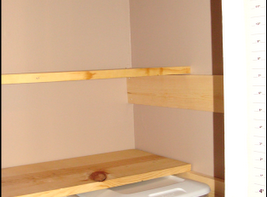Color Psychology in Home Decor: Choosing the Right Palette

When it comes to home decor, color plays a vital role in creating the desired ambiance and atmosphere. The psychology behind colors has a profound impact on our moods, emotions, and overall well-being. Choosing the right color palette for your home can make a significant difference in how you feel while spending time in each room. Understanding color psychology can help you create a harmonious and balanced living space that resonates with your personal style and promotes a positive mindset.
Warm Colors
Warm colors such as red, orange, and yellow are known to evoke feelings of energy, enthusiasm, and happiness. These colors are stimulating and can make a space feel cozy and inviting. In home decor, warm colors work exceptionally well in communal areas like living rooms or dining rooms, where you want to encourage social interactions and lively conversations. However, it is important to use warm colors in moderation as excessive use can create a sense of restlessness and overstimulation.
Cool Colors
Cool colors like blue, green, and purple are known for their calming and soothing effects. These colors promote a sense of tranquility and relaxation, making them ideal for bedrooms, bathrooms, and areas where you want to unwind after a long day. Cool colors can also make smaller spaces appear larger and more spacious. However, it’s essential to strike a balance and avoid using cool colors excessively, as they can create a cold and uninviting atmosphere.
Neutral Colors
Neutral colors such as white, beige, and gray are versatile and timeless choices for home decor. They provide a blank canvas that allows you to experiment with accents and accessories. Neutral colors are soothing and can create a sense of calm and simplicity in any room. These colors work well in virtually any space and can easily adapt to changing trends and personal preferences. Additionally, neutral colors can make a space feel larger and more open, making them particularly suitable for smaller apartments or rooms with limited natural light.
Accent Colors
Accent colors are an excellent way to add personality and visual interest to your home decor. These colors are used in smaller doses to create focal points or to highlight specific architectural details or furnishings. When choosing accent colors, consider the mood you want to create in each room. For example, a vibrant red accent can add energy and excitement to a living room, while a soothing green accent can create a relaxing atmosphere in a bedroom. It’s essential to use accent colors strategically to avoid overwhelming the space.
Personal Preference and Considerations
While understanding color psychology can guide your decision-making process, it’s crucial to prioritize your personal preferences and consider other factors such as the size of the room, natural lighting, and existing furniture and decor elements. Every individual has unique associations and emotional responses to colors, so it’s essential to choose a palette that aligns with your personal taste and style. Experimenting with different color combinations and seeking inspiration from home decor magazines or online platforms can help you find the perfect palette for your home.
Conclusion
Color psychology is an invaluable tool when it comes to creating a harmonious and comfortable living environment. Choosing the right color palette for your home decor can have a profound impact on your mood and overall well-being. By understanding the effects of warm, cool, neutral, and accent colors, you can create a space that reflects your style, promotes positive emotions, and enhances your everyday life. So, consider the psychology behind colors and let your home be a true reflection of your personality.


